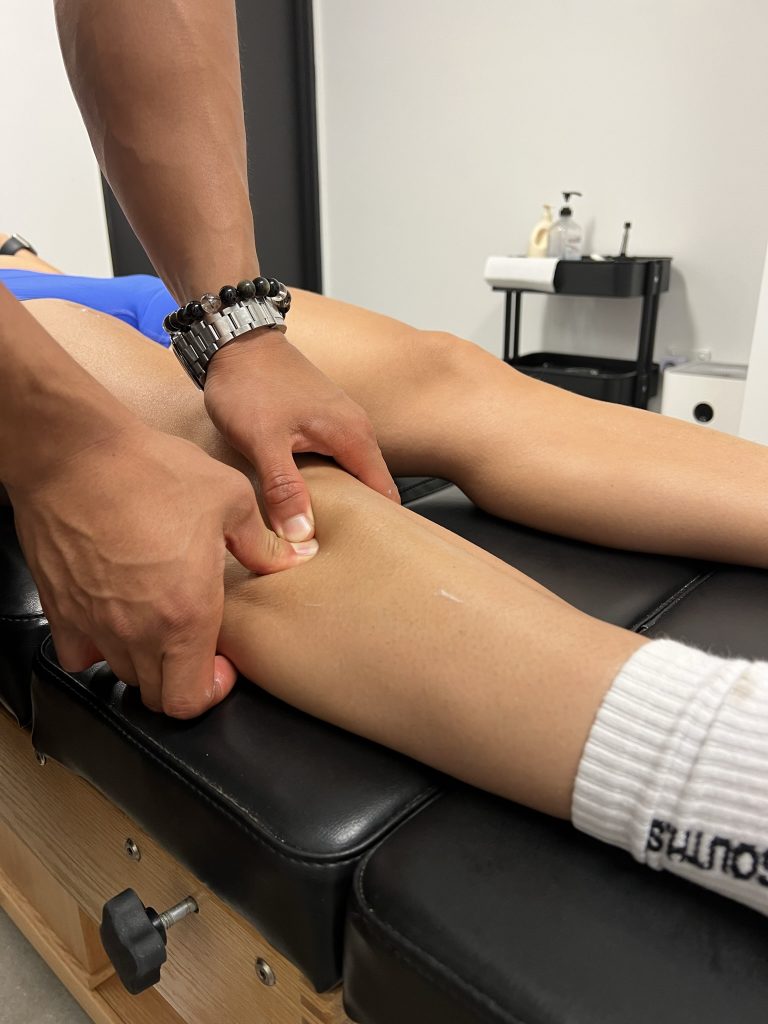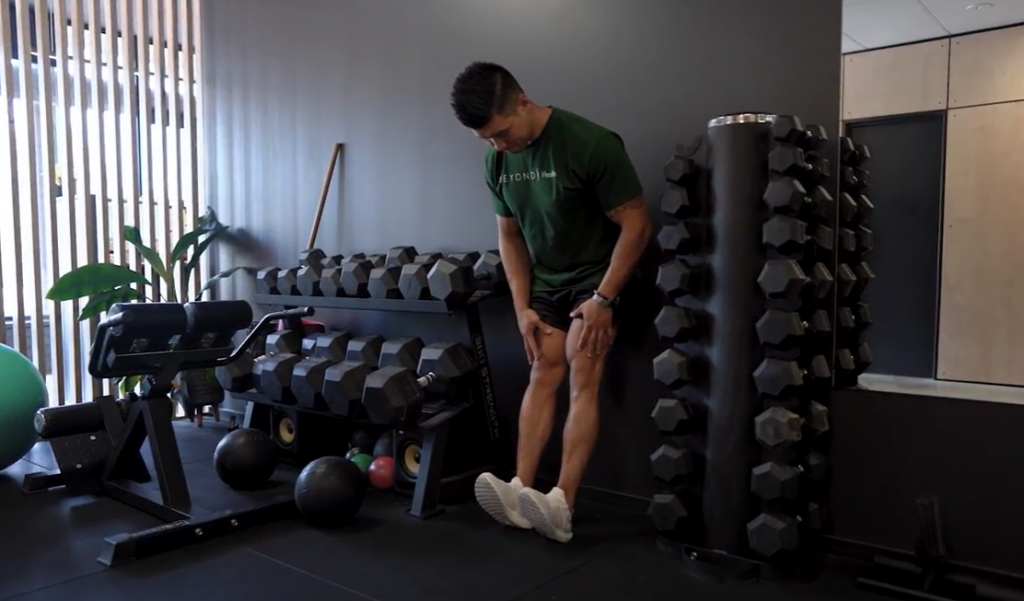
26 Mar How to Avoid Shin Splints While Running
If you’ve ever experienced shin splints, then you know how annoying and painful they can be. Shin splints are a type of injury that is caused by repetitive impact on the shinbone and the surrounding muscles and tissue. They are common in runners and other athletes who put a lot of stress on their lower legs.
Shin splints can feel like a dull, aching pain or a sharp, stabbing sensation along the front, inner or outer part of the lower leg. Some people describe it as a throbbing, burning or tingling sensation. The pain may worsen during or after exercise and may be accompanied by swelling or tenderness in the affected area.
The good news is that shin splints can be prevented with the proper precautions. In this article, we will explain how to avoid shin splints while running. By following these tips, you can keep your shins healthy, stay injury-free and embrace your inner Usain Bolt!

What are the causes of shin splints?
Shin splints, also known as medial tibial stress syndrome, are caused by a combination of factors, including:
- Overuse: Repeated stress and strain on the muscles, tendons, and bones of the lower leg can lead to shin splints.
- Flat feet or high arches: Foot abnormalities can lead to changes in the way your feet and legs absorb shock.
- Poor footwear: Wearing shoes that do not provide proper support, shock absorption, or cushioning can also contribute to shin splints.
- Muscle imbalances: Imbalances in the muscles of the lower leg or hip can cause uneven forces on the shin bone.
- Running on hard surfaces: Running or exercising on hard surfaces such as concrete or asphalt can increase the risk of developing shin splints.
- Lack of flexibility: Tightness of the calf muscles and hamstring muscles can lead to increased stress on the shin bone.
- Sudden increase in activity: Starting a new workout routine, increasing the intensity or duration of your exercise too quickly, or suddenly changing your exercise routine can increase the risk of developing shin splints.

How can you run pain-free?
Some commonly recommended ways to prevent shin splints while running are:
- Proper warm-up: Always warm up before running to prepare your muscles and joints for the workout. Start with some light exercises such as walking, jogging, or stretching.
- Gradual progression: Increase your mileage or intensity gradually as your body adapts to the demands of running. Avoid sudden spikes in the volume or intensity of your training.
- Wear appropriate shoes: Make sure to wear supportive shoes that fit well and offer adequate cushioning and shock absorption.
- Run on soft surfaces: Try to run on softer surfaces like grass, dirt, or a treadmill to reduce the impact on your legs.
- Strengthen your lower leg muscles: Strengthening exercises for the calves, shins, and ankles can help prevent shin splints.
- Rest and recover: Allow enough time for rest and recovery between workouts to avoid overuse injuries like shin splints.
- Maintain good running form: Maintain good posture, land softly on your feet, and avoid over-striding to reduce the stress on your legs while running.

The importance of stretching for shin splints
Stretching is an important part of preventing and treating shin splints, as it helps to alleviate tightness and stress in the muscles surrounding the shin area. When the muscles in your lower leg are tight or overworked, this can lead to excessive strain on the shin bones, resulting in inflammation and pain.
Stretching can help to increase flexibility in the muscles and reduce the risk of developing shin splints. It can also improve blood flow and promote healing in the affected area. Some effective stretches for shin splints include:
- Toe walks: Walk on your heels for 20-30 meters, then walk on your toes for 20-30 meters. Repeat this cycle for several minutes.
- Calf raises: Stand with your feet hip-width apart and rise onto the balls of your feet. Hold for 1-2 seconds, then slowly lower back down. Repeat for several reps.
- Ankle rotations: Sit down with your legs straight out in front of you. Rotate your ankles clockwise for 30 seconds, then counterclockwise for another 30 seconds.
- Wall stretch: Stand facing a wall, and place your hands on the wall at shoulder height. Lean your body forward until you feel a stretch in your shins. Hold for 20-30 seconds.
- Quad stretch: Stand with your feet hip-width apart, and lift your left foot towards your buttocks. Hold onto your left ankle with your left hand, and gently pull towards your buttocks until you feel a stretch in your quad. Hold for 20-30 seconds, then repeat on the other side.

According to a recent study, runners should stretch after a workout when their muscles are warm and pliable. This helps to increase flexibility and reduce the risk of injury. Strenuous stretching before a run may not be as beneficial and could even increase the risk of injury if not done properly.
It’s also important to note that stretching should not replace a proper warm-up. Ideally, your warm-up should include the raises and rotations mentioned above plus some dynamic movements like the below to prepare your body for running:
- Hip circles: Standing with feet shoulder-width apart, rotate the hips in circles clockwise and counterclockwise.
- Leg swings: Standing with hands on a wall for support, swing one leg back and forth in a controlled manner, then switch to the other leg.
- Lateral lunges: Step out to the side with one foot, bending the knee and keeping the other leg straight. Return to the centre, then repeat on the other side.
- High knees: Standing in place, lift one knee towards the chest, then quickly switch to the other side, alternating back and forth.
- Butt kicks: Standing in place, kick one heel back towards your butt, then quickly switch to the other side, alternating back and forth.
- Arm circles: Standing with arms straight out to the side, make circles with the arms in a clockwise and counterclockwise motion.
- Walking lunges: Step forward with one foot, bending both knees and then step forward with the other foot. Continue alternating between legs as you move forward.
- Squats: Stand with feet shoulder-width apart and perform controlled squats, keeping weight in the heels and chest lifted.
- Star jumps: Stand with feet together, then jump and spread feet apart while raising arms overhead. Jump back to starting position, and repeat.
It is important to remember that stretching and warm-up exercises should always be done gently and gradually, without pushing yourself too hard or causing pain. If you are experiencing persistent or severe pain from shin splints, it is important to seek medical attention from a healthcare professional.

The importance of a good shoe
Shin splints are a common problem among athletes and fitness enthusiasts, which are caused by inflammation of the muscles, tendons, and bones in the lower leg. One of the most effective ways to prevent shin splints is by wearing good quality and properly fitting shoes.
Here are some reasons why a good shoe is essential to prevent shin splints:
- Cushioning: The right shoe provides the necessary cushioning to absorb the impact of your feet hitting the ground during physical activity. This cushioning helps to reduce the stress on your lower legs and feet, reducing the risk of developing shin splints.
- Support: A good shoe provides adequate support to your feet and reduces the chances of overpronation, where your foot rolls inwards excessively while walking or running. This can cause strain on the muscles in the lower leg and increase the risk of developing shin splints.
- Fit: A shoe that fits correctly ensures that your feet are stable inside the shoe, reducing the chances of your foot sliding around and your toes hitting the front of the shoe. When your foot is secure inside the shoe, it helps to prevent the muscles in the lower leg from being overworked and can reduce the risk of developing shin splints.
- Durability: A good quality shoe is made from durable materials that are designed to withstand the impact and wear and tear of physical activity. A shoe that is not durable and lacks support can increase the chances of injury, including shin splints.
Wearing the right shoe is crucial in preventing shin splints. A good quality shoe that provides the necessary cushioning, support, fit, and durability can help reduce the risk of developing shin splints and other related injuries.

Treatment for Shin Splints
If shin splints are causing you pain and impacting the quality and frequency of your workouts, then try implementing these treatment options into your daily routine:
- Rest: Taking a break from the activity that caused the shin splints is essential for recovery.
- Ice: Applying ice to the affected area for 15-20 minutes, 3-4 times a day can help reduce pain and inflammation.
- Compression: Using compression bandages or sleeves can help reduce swelling.
- Elevation: Elevating the affected leg can also help reduce swelling.
- Stretching: Stretching the calves and shins can help to prevent shin splints.
- Shoe inserts: Wearing shoe inserts or orthotics can help to reduce stress on the shin.
- Pain relievers: Over-the-counter pain relievers can help to relieve pain and reduce inflammation.
- Physical therapy: A physical therapist like a specialised sports chiropractor can help provide exercises to help stretch and strengthen the leg muscles.
- Gradual return to activity: Slowly easing back into physical activity can help prevent re-injury.

The Bottom Line To Crossing The Finish Line
As covered, shin splints are a common injury that can affect many athletes and physically active individuals. Shin splint pain can be described as sharp discomfort in the front part of the lower leg, typically along the shin bone or tibia.
As runners ourselves, we know how frustrating shin splints can be! That’s why we recommend trying some of the tips outlined to help take control of the issue and get back on track. At Beyond Health Chiropractic, we specialise in sports chiropractic care and treat runners every week who are plagued with shin splints. Book a session with us today and let us help you make your lower legs the strong foundation of your body, instead of a weak point that is impacting the quality of your runs, workouts and life.







No Comments